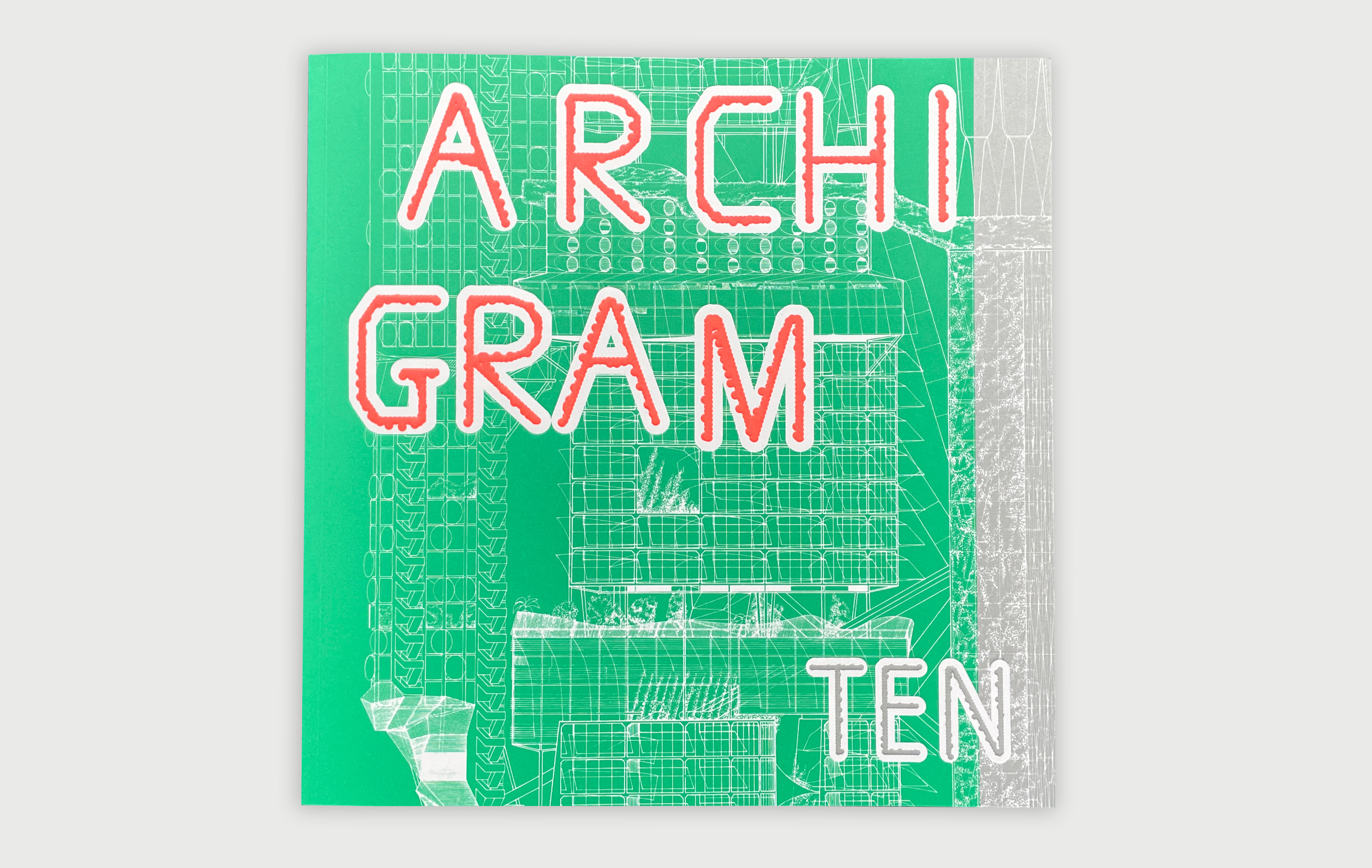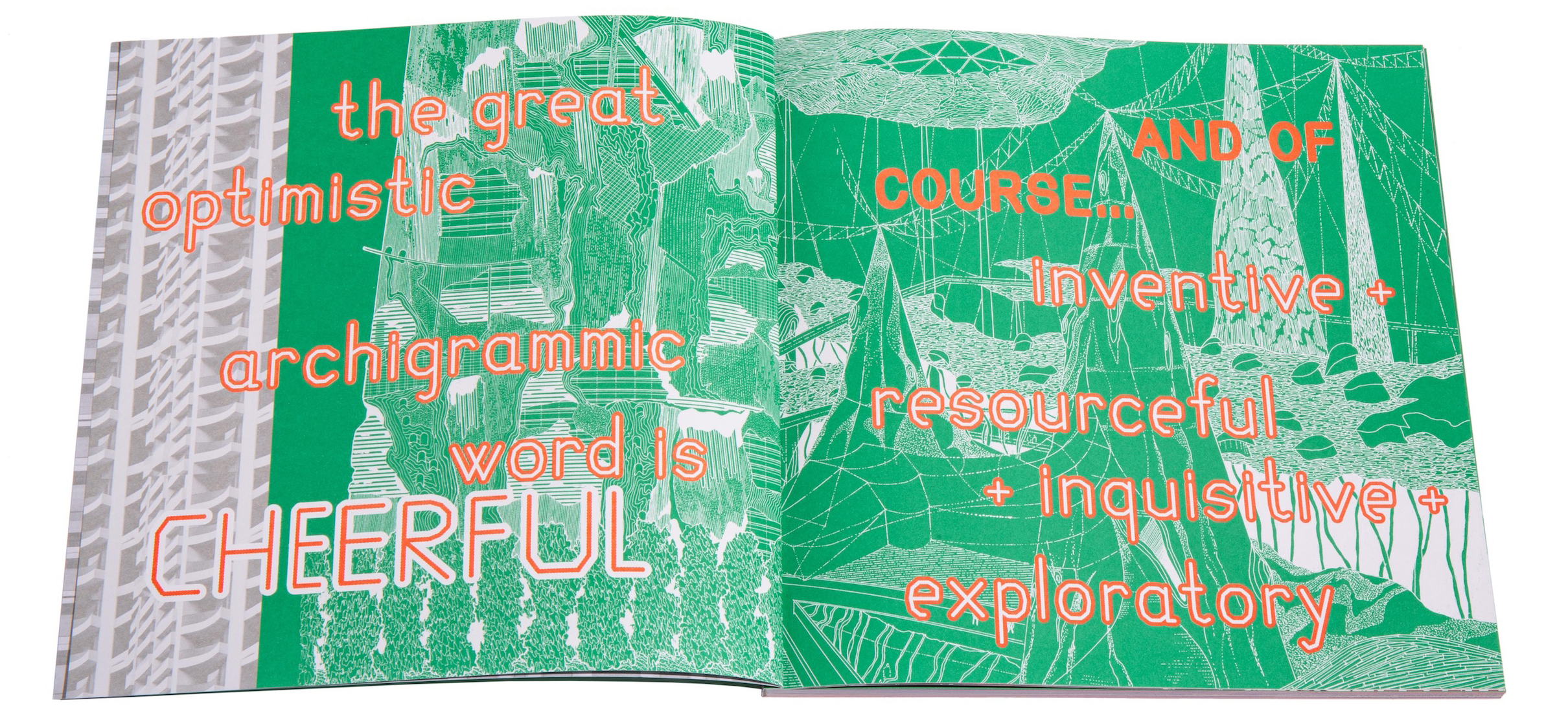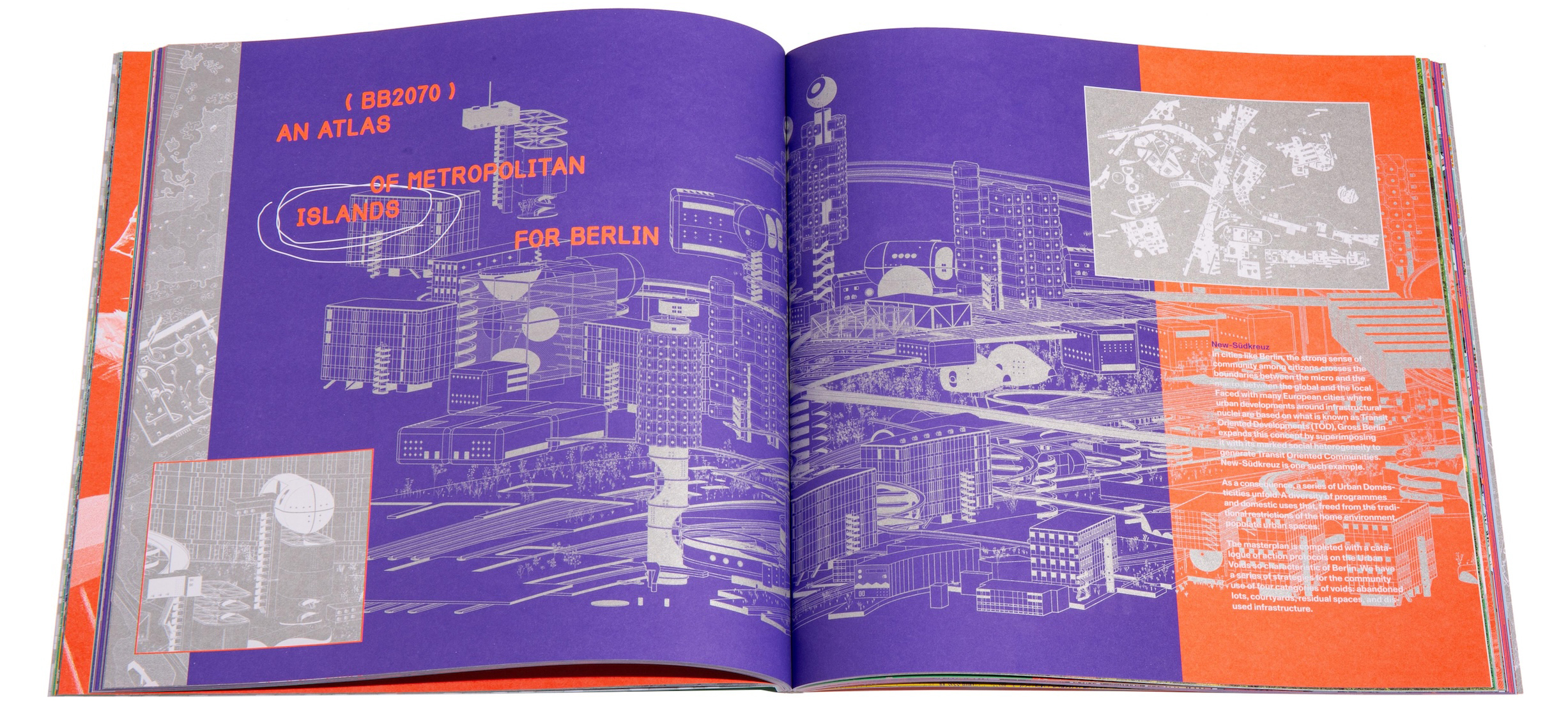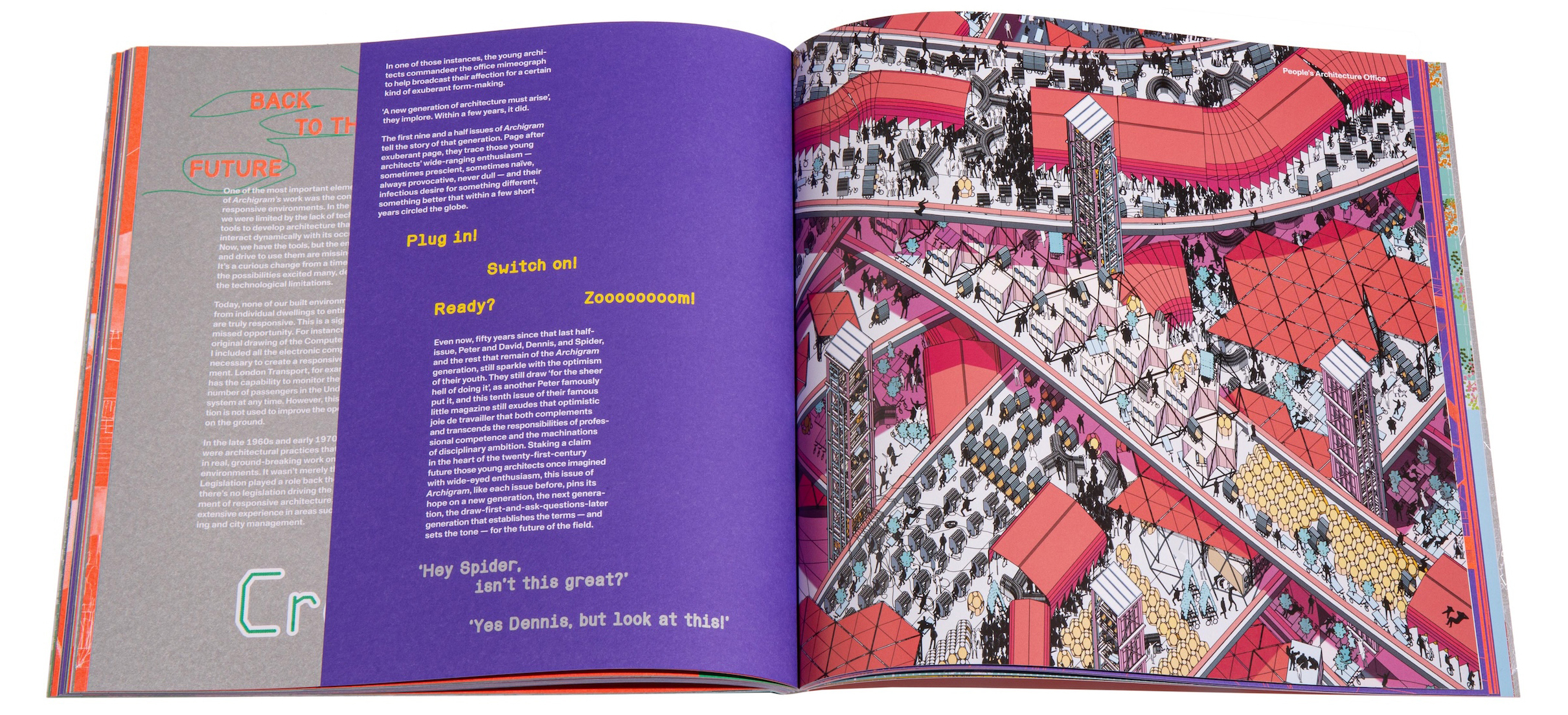Friday, 3:30pm
2 May 2025
Unbuilt environment
Archigram Ten
Editor: Peter Cook. Designer: PG Howlin’ Studio. Circa Press, £25. Reviewed by Catherine Slessor
Catalysed by the cultural convulsions and technological whizz-bangery of the 60s, Archigram was architecture’s ultimate scenester supergroup, writes Catherine Slessor. If it hadn’t existed, it might have been necessary to invent it. Paradoxically, for all its Zipatoned influence on the Zeitgest, Archigram built absolutely nothing (‘architecture without architecture’), cementing its reputation through provocative Pop Art noodlings and fantabulous speculations on the Shape of Things to Come.
Charles Jencks, architecture’s answer to Peter York as a prodigious style spotter and tastemaker, once described Archigram’s oeuvre as ‘a series of monumental objects; one hesitates in calling them buildings since most of them moved, grew, flew, walked, burrowed or just sank under the water.’ The Walking City of 1964 is perhaps the gang’s most familiar conceit; now, like them, informally accorded the status of English national treasure.
Always audaciously iconoclastic, these propositions were disseminated through a succession of publications, or Archigrams. The first one was launched in 1961, ‘the same year as Private Eye’, notes Peter Cook, one of three surviving members of the original six-strong cabal. Still on the scene at 88, as a practitioner and emeritus professor tangentially attached to various institutions, Cook was the driving force behind Archigram Ten. Exuding lavish production values, unimaginable back in the day, this picks up 50 years after the last one left off, as a way of rebooting and reframing ‘l’esprit d’Archigram’ for the current chaotic age of diminishing attention spans.
Above: Cover of Archigram Ten, Circa Press, 2024. Right: One of the introductory spreads from the book.

Interspersed with short essays and interviews, an ensemble of speculative projects from Patagonia to Guizhou, authored by Cook’s global clique of preferred contemporary architects, riffs on themes such as indeterminacy, irony, technology, ecology, cities, monsters, mutants, megastructures and more. Both visually and verbally, however, the vibe is so phenomenally tumultuous, it’s often hard to discern what’s going on.
When I worked on the Architectural Review, we were sternly injuncted to ‘make the building live on the page’. Here, the tenor is more ‘make the building freak out on the page’, with projects enrobed in verbiage, their impact amplified by hectic, retina-searing graphics. No chromatic turn is left unstoned: orange, green, purple and silver predominate, often all at once. (Props to Hong Kong-based printer C&C; it probably made an invigorating change from churning out Macau passports.) Designer Pedro Pina of PG Howlin’ Studio clearly had fun with this one, which also features typefaces from Gaile Pranckunaite and Dinamo. The outcome is indubitably more turbocharged than anything Zipatone and hand-stencilling could ever contrive.
Cook describes Archigram Ten as a ‘poke in the eye for those people who would have us drag architecture into the boring abyss.’ In his octogenarian incarnation as un vieillard terrible, he regularly rails at the triumph of what he calls ‘biscuit architecture’, evinced by the brick-centric milieu of New London Vernacular, which he regards as conspiring to fatally blandifiy the metropolis, if not the planet. Certainly, Archigram was never biscuit or boring, but this self-consciously zany resurrection might be summed up in the words of that famous 1980s pop song: ‘The future's so bright, I gotta wear shades.’
Catherine Slessor, architectural writer and editor, London
Right. Spread. from the book highlighting Berlin-based New Südkreuz and Transit Oriented Developments (OTD).

Right. A spread from the book featuring texts by the Archigram co-founder Dennis Crompton (1935-2025) and professor of architecture Todd Gannon.

Eye is the world’s most beautiful and collectable graphic design journal, published for professional designers, students and anyone interested in critical, informed writing about graphic design and visual culture. It is available from all good design bookshops and online at the Eye shop, where you can buy subscriptions and single issues.
